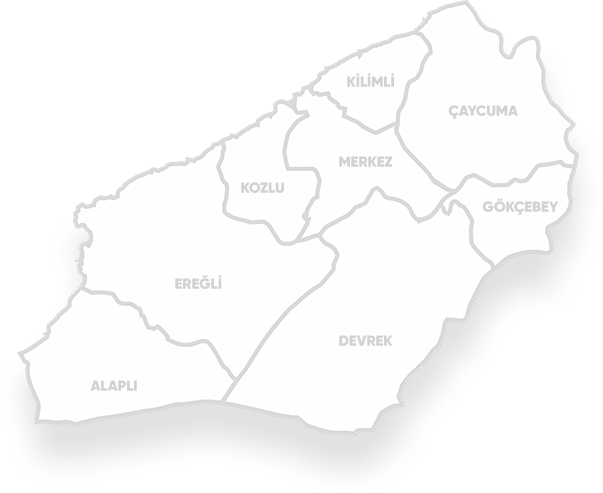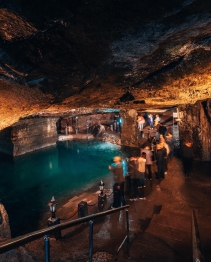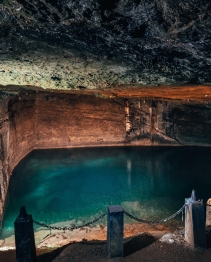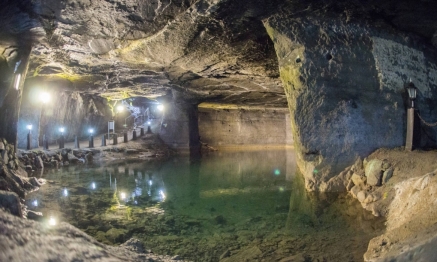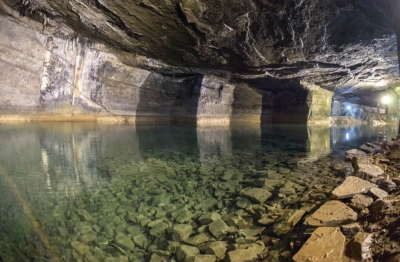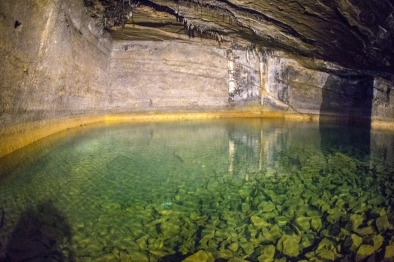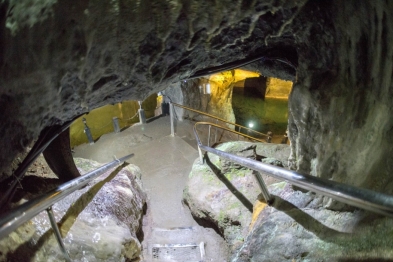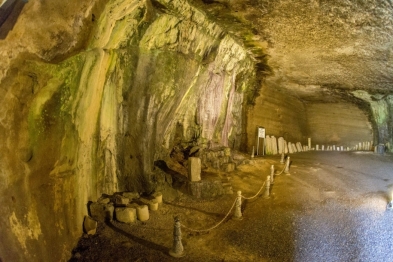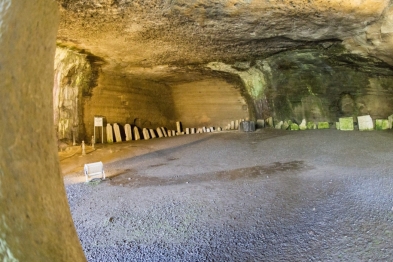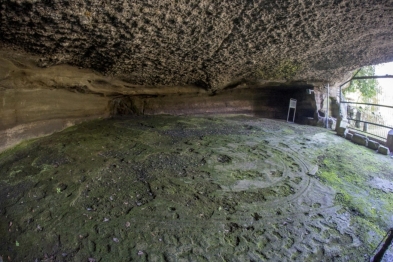
-
 Hakkımızda
Hakkımızda Zonguldak Kömür Jeoparkı ile ilgili detaylı bilgiler ve daha fazlası...
Hakkımızda
Hakkımızda Zonguldak Kömür Jeoparkı ile ilgili detaylı bilgiler ve daha fazlası... -
 Haberler
Haberler
-
 Keşfet
Keşfet Zonguldak Jeoparkları Keşfedin
Keşfet
Keşfet Zonguldak Jeoparkları Keşfedin -
 Öğren
Öğren
-
 Etkinlikler
Etkinlikler
-
 Jeo-Ağ
Jeo-Ağ
-
 İletişim
İletişim
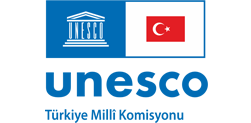

Cehennemağzı Caves
G-40 The title of Cehennemağzı Caves is the common and general name of three caves (Kilise cave, Herakleios cave and Ayazma cave) lined up side by side in the valley formed by the creek called Acheron River in mythological and historical sources and later named Ayazma Stream, Gavur Stream and Limanbaşı Stream. For this reason, these three caves are also known as Acheron Caves.
The floor of the first cave (Church) was paved with mosaics with original floral and geometric motifs. A small apse was opened on the eastern wall and there are steps in front of it. According to the sources, it is stated that the cave was a very old Christian church and was used as a secret place by Saint Andrew, one of the apostles of Jesus. There is a sarcophagus that is said to belong to St. Nicholas. According to the sources, it is stated that the cave was a very old Christian church and was used as a secret place of worship by Saint Andrew, one of the apostles of Jesus and by the people living in the region in the first years of the spread of Christianity.
The second one is the Cehennemağzı (Hercules, Heracles) cave. It contains a lake of approximately 100 m2, supported by two elephant legs and covering a total area of 400 m2. Hercules Cave, also known as 'Specus Hercules' in the sources, is located on a slope 10-12 m high from the road with a narrow entrance, and is also known as 'Koca Yusuf Cave' or 'Dımdım Cave' among the local people. The cave is 11 meters below the entrance level and covers a total area of 400 m2, 60 meters long and 8-24 meters wide. There is a large and a small column and a lake in the middle of which is about 4 meters deep. The wall on the right side of the entrance of the cave is covered with dripstones. The entrance of the cave goes underground and its name is mentioned as the house of Hades, the god of the underworld in Doric mythology. Hercules symbolizes the invincible power of man to resist and attack nature. All the works of Heracles are for good. It serves humanity by fighting the evils that nature has unleashed on people. Having many adventures, Hercules accomplishes most of them because he has to fulfill Eurystheus' malicious wishes. Hercules kills his children and Iphicles' two children by throwing them into the fire during a seizure where he cannot control his strength. He then goes into exile voluntarily. The oracle of Delphi tells him to go to Eurystheus, King of Mycenae, to be cleansed of his sins, to enter his service and to do whatever he wants. Eurystheus asks Heracles to do twelve works. The last and most difficult of these is the abduction of Kerberos, the three-headed dog, guardian of Hell, from the underworld of Hades. Hercules, with the help of Hermes and Athena, descends into the nether world, from which no mortal has returned. He takes the three-headed Kerberos and smuggles him into the world. Eurystheus gets scared when he sees the dog, and Heracles takes the dog back to Hades. According to mythology, the place where Heracles descended to Hades' country to kidnap Kerberos is the Cehennemağzı Cave in Kdz.Ereğli.
The third cave (Ayazma) is the largest in terms of surface area. The water in the cave, which also has a lake inside, was accepted as a sacred water area in ancient times and was used for divination and worship.
The layers close to the Earth's surface of the Cehennemağzı Caves have the basement rock structure formed by the hardening of the molten rocks as a result of contact with the air, and was formed by extrusion that cooled and hardened by the eruption of magmatic rocks near the surface. Due to this natural formation (hardening of the rock in which the cave is located), Cehennemtağzı Caves are in the 'volcanic caves' type from the primary caves group.
